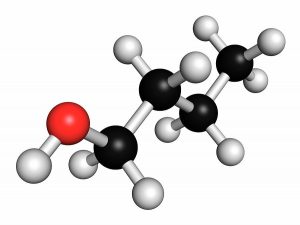If you’ve ever filled up your car with fuel at a gas station, you no doubt noticed the blurb that the gas “contains up to 10% ethanol” at the pump. This push for using ethanol in car fuel came from our federal government. According to the US Energy Information Administration (EIA), “Ethanol-blended fuels are one pathway to compliance with elements of the federal renewable fuel standard (RFS). The total volume of ethanol blended into motor fuels used in the United States has continued to increase since 2010.”
The US Department of Energy also confers a number of benefits to using an ethanol blend, including increased energy security, improved fuel economy and performance, job creation, and lowered CO2 emissions.
However, two questions remain. First, has ethanol lived up to its promise, and second, is there any competition to ethanol?
With regard to the effectiveness of ethanol, it’s a bit of a mixed bag. That’s because it largely depends on how ethanol is produced and manufactured. To get a clear sense of the issue, you have to understand the phenomenon of lifecycle analysis (LA) with regard to assessing “the overall greenhouse gas (GHG) impacts of a fuel, including each stage of its production and use” according to the Environmental Protection Agency (EPA). Under these parameters, the effectiveness of a fuel product is its cumulative contribution to greenhouse gas emissions, so the higher the contribution, the less effective it is.
For ethanol or any biofuel, the LA is from “seed to tailpipe,” meaning the total impact of greenhouse emissions from planting, to harvesting, to shipping, to manufacturing, to distribution, and ultimately, as emissions from individual automobiles.
As reported by the Union of Concerned Scientists (UCS), “The best ethanol can produce as much as 90 percent fewer lifecycle emissions compared to gasoline, but the worst ethanol can produce significantly more lifecycle emissions than gasoline.”
The wide discrepancy is attributable to “how ethanol is made and what it is made from,” according to scientists from UCS. The University of Illinois estimates that “Ethanol production results in a net energy gain— according to some authoritative life-cycle analyses— producing about 67 percent more energy than it takes to grow and process the corn into ethanol. According to the Alternative Fuels Data Center, ethanol is typically made from corn, though it is “also made from cellulosic feedstocks, such as crop residues and wood—though this is not as common.”
However, ethanol does present significant challenges. One problem is that as farmers clear lands to plant corn, wildlife habitats are compromised, raising the specter of endangerment. As reported by the EPAs National Center for Environmental Economics (NCEE), “Over reliance on corn ethanol could pressure the land and water base, contributing to a dramatic loss of prairie ecosystems in the U.S. and reducing the influence of compliance programs designed to reduce soil erosion and protect ecosystems.”
Another problem is broader and more humanitarian in concern. As science and technology writer Anthony Donaghue points out, “Farmers may also opt to plant corn and sacrifice other food crops for biofuel production, which would drive the prices of food.” This unintended consequence disproportionally affects people at the margins of the economic ladder since food cost is the biggest percentage of their budgets. And as NCEE found, “On a much larger scale, reductions in U.S. exports of corn and other crops lead to higher, world commodity prices (Elobeid, et al., 2006)” which in turn “can contribute substantially to deforestation in tropical countries (Morton, et al., 2006).”
But there may be a game-changer in town by the name of butanol. This biofuel is traditionally produced “. . . by fermentation employing a number of microorganisms such as Clostridium acetobutylicum and Clostridium beijerinckii,” the same process that produces ethanol. However, current manufacturing processes also allow butanol to be manufactured more synthetically, which has proven to be economically superior as compared to fermentation-based processes. This is important so that butanol can compete with ethanol with regard to large-scale production.
And it appears there may be advantages with regard to using butanol versus ethanol. To begin with, ethanol can lead to engine corrosion, especially of smaller engines, the kind found in motorcycles and boats. “Ethanol has inherent properties that can cause corrosion of metal parts, including carburetors, degradation of plastic and rubber components, harder starting, and reduced engine life,” says Marv Klowak, global vice president of research and development for Briggs & Stratton, the largest manufacturer of small engines. This is because ethanol is hygroscopic, meaning it attracts moisture, and of course moisture leads to rusting and corrosion.

This is particularly problematic with boat engines, for obvious reasons, because boats in general, and boat engines in particular, are constantly exposed to water. As the Colorado Boat Center points out:
The problem with using an ethanol-blended fuel is that ethanol tends to absorb water molecules, from the air as well as from actual water. And in the boating environment, there’s a lot of water molecules around! When water (absorbed into the fuel tank by the ethanol) and gasoline mix, something called phase separation occurs, and the ethanol-water mix can separate from the gasoline and sink to the bottom of your fuel tank. If that gets sucked into your fuel lines, performance issues can arise: misfiring, bad starting, poor compression and performance.
Given the pleasure derived from boating and the often exorbitant cost of owning and maintaining a boat involves, this is not a minor challenge for boaters, especially those on tighter budgets. And May 31, 2019, EPA ruling “allowing the year-round sale of motor gasoline blends containing up to 15% fuel ethanol, or E15,” could spell disaster for boaters.
A recent survey by boatingindustry.com indicates that “Ethanol appears to be playing an even bigger role in service issues than it was just a year ago. Eighty-seven percent of our respondents reported that their business has seen engine damage caused by ethanol. That was up from 73 percent in the same survey in April 2015.”
In addition to the quantitative cost of engine repairs, the survey also found a significant qualitative impact. One respondent said “Ethanol is a boom for the service departments. Ethanol is a HUGE drag on our industry because it negatively affects the customers. It makes them hate boating. It ruins their day, their boat and their entire boating experience.”
This is where butanol is heads and shoulders a better option for boaters than ethanol. According to the American Institute of Chemical Engineers (AICE), butanol confers a number of general advantages: “Another advantage over ethanol is that butanol has decreased water solubility; therefore, butanol can be both an additive to fuel and a standalone fuel source.” AICE also states that butanol is “more hydrophobic than ethanol,” meaning it will cause fewer corrosion issues, which will likely translate into cost savings, improved engine efficiency, and a better all-around boating experience.
There are signs that butanol is making headway in the boat market. As reported by the National Marine Manufacturers Association, “The American Boat and Yacht Council, under the direction and guidance of the U.S. Department of Energy and Argonne National Laboratory, have been engaged in an industry-supported program to evaluate the performance of recreational marine engines operated on fuel containing as much as 16 percent biobutanol.”
John McKnight, senior vice president for government relations at NMMA, said, “The recreational boating industry is proud to be on the leading edge of renewable fuel research as we continue to work towards a solution for our industry and the many others that are impacted by the RFS. Our on-water and laboratory testing of biobutanol has been conducted in a wide variety of recreational marine engines and boats, giving us confidence that this fuel is a safe, viable alternative to ethanol.”
Others share McKnights enthusiasm, including Jeff Wasil, Engineering Manager for Emissions Testing, Certification & Regulatory Development at Evinrude, who said, “I’m thrilled that the entire recreational marine industry could come together to agree on a biofuel that indicates so much promise for our industry. Not only has the industry signed off on the resolution, but it has been very supportive of the efforts over the past several years — stepping up with boats, engines, and people to collaborate in the testing. We’ve looked at the situation and offered a real solution for the industry and consumers.”
And there appears to be equal optimism downstream. BoatUS Seaworthy Magazine Editor and Damage Avoidance Expert Bob Adriance states, “With its new cost competitiveness and energy advantages, butanol could be a biofuel that boaters embrace.”
The reality is that butanol is a win not only for boaters but for manufacturers of all combustible engines. Paul Beckwith, CEO at Butamax™ Advanced Biofuels said, “Butamax welcomes NMMA’s findings on the compatibility of fuel blends of up to 16 percent biobutanol with marine engines. We believe that these results from the extensive evaluation performed by NMMA and its partners are a powerful addition to the large body of work on biobutanol compatibility with automotive engines and fueling infrastructure which Butamax has sponsored and published.”
And science as a whole seems to be in the collective corner of butanol. Duncan Wass, Director of the Cardiff Catalysis Institute, makes no bones about it, stating, “Ethanol actually is a poor alternative fuel. Butanol is much better. It contains about 30 percent more energy per gallon than ethanol, is easier to handle and more of it can be blended into each gallon of gasoline. In fact, you could fuel a car on pure butanol and it would run absolutely fine. That’s the basis for butanol’s emerging reputation as ‘the gasoline of the future.’”
From this perspective, butanol may be the future of transitioning to a greener economy, whether it be by land, or by sea.
At Newsweed.com, we adhere to three simple principles: truth, balance, and relatability. Our articles, podcasts, and videos strive to present content in an accurate, fair, yet compelling and timely manner. We avoid pushing personal or ideological agendas because our only agenda is creating quality content for our audience, whom we are here to serve. That is why our motto is ”Rolling with the times, straining for the truth.”
Your opinion matters. Please share your thoughts in our survey so that Newsweed can better serve you.
Charles Bukowski, the Los Angeles beat poet that captured the depravity of American urban life once said, “There is something about writing poetry that brings a man close to the cliff’s edge.” Newsweed is proud to stand in solidarity and offer you a chance to get close to the cliff’s edge with our first Power of Poetry Contest. Are you a budding bard, a versatile versifier, a rhyming regaler? Do you march to the beat of iambic pentameter, or flow like a river with free verse? If so, here’s your opportunity to put your mad poetic chops to the test. Enter our poetry contest for bragging rights and an opportunity to win some cash!






